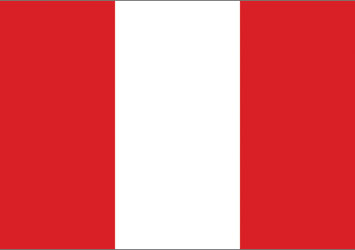
Peru: INDECOPI
Amusement ride and concrete standards highlight MOU relationship.
Along the western side of South America, on the South Pacific Ocean coast, lies Peru, where the coastal plain rises to the Andes Mountains and Amazon jungle. A bit more than a third of the country's 30+ million people live in its capital city of Lima.
Lima is also home to Peru's national standards body, INDECOPI - El Instituto Nacional de Defensa de la Competencia y de la Protección de la Propiedad Intelectual. INDECOPI promotes fair and honest competition in the Peruvian economy; it works to protect consumer rights and intellectual property. And it runs such services as the National Accreditation System, the Citizen Service and the National Metrology System.
INDECOPI's standards work includes participation in ASTM committees through a memorandum of understanding signed by the two organizations in 2003. Currently, more than 200 Peruvian technical experts are ASTM members through the MOU; student membership in ASTM numbers more than 40.
INDECOPI has used some 525 ASTM standards as the basis for Peruvian national standards and more than 110 as normative references; it has adopted more than 130. There has been significant use of ASTM standards from Committees C09 on Concrete and Concrete Aggregates; D02 on Petroleum Products, Liquid Fuels and Lubricants; and D13 on Textiles.
"ASTM standards have contributed to the industrial development of the countries that have adopted or taken them as reference for the manufacture of distinct products," says Patricia Castro, an INDECOPI executive.
Highlighting the usefulness of ASTM standards in Peru is the recent adoption of standards from Committee F24 on Amusement Rides and Devices. Five F24 standards, with plans to adopt more, have become Peruvian norms:
- F893, Guide for Inspection of Amusement Rides and Devices;
- F1159, Practice for Design of Amusement Rides and Devices that Are Outside the Purview of Other F24 Design Standards;
- F1193, Practice for Quality, Manufacture and Construction of Amusement Rides and Devices;
- F1957, Test Method for Composite Foam Hardness-Durometer Hardness; and
- F2374, Practice for Design, Manufacture, Operation and Maintenance of Inflatable Amusement Devices.
Castro notes that these standards are beneficial for safety and more. "At a market level, this sector is becoming more competitive, for which the adoption of ASTM standards has supported the compliance of the necessary requirements for the operation of amusement rides."
An ongoing aspect of the MOU has been the training of Peruvian professionals, which over the years has focused on concrete: its sustainability, modeling and material advances. Concrete is also the subject of a course offered by EnginZone, an ASTM international training partner located in Lima. In addition, EnginZone offers corrosion, cathodic protection and other courses that use ASTM standards.
Other work through the MOU has involved outreach meetings focused on biofuels, road safety, proficiency testing and standards education at colleges and universities. In addition, Castro came to ASTM in 2008 as a participant in the Standards Expert Program.
To learn more about the ASTM MOU Program, visit the ASTM website.
Standards Body
Instituto Nacional de Defensa de la Competencia y de la Protección de la Propiedad Intelectual
Location
Lima, Peru
Major Activities
Standardization, accreditation and metrology
MOU Signed with ASTM
2003
 SN Home
SN Home Archive
Archive Advertisers
Advertisers Masthead
Masthead RateCard
RateCard Subscribe
Subscribe Email Editor
Email Editor